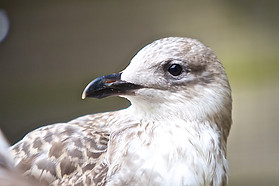If you are worried about a young bird or baby animal that seems to be alone – watch it from a distance first to check that it is an orphan. The parents may be nearby and waiting for people to leave before returning to their baby. If you are still concerned - call for advice first.
BABY
HARES

It is normal for these babies to be left alone from an early age for long periods of time in grassy areas. Their mother will return to feed them, usually around dusk.
-
They may not be orphans. Watch from a distance or check again later to see if the mother returns.
-
If not please contact us for advice before you approach an animal.
BABY
FAWNS

It is normal for these babies to be left alone from an early age for long periods of time in grassy areas. Their mother will return to feed them, usually around dusk.
-
They may not be orphans. Watch from a distance or check again later to see if the mother returns.
-
If not please contact us for advice before you approach an animal.
BABY
RABBITS

Their mothers enclose baby rabbits inside a burrow and return to nurse them about once a day. The babies start to emerge at about 18 days old.
-
If they are above ground and their eyes are still closed they have probably been dug out by a predator and may need help.
-
Please contact us for advice before you approach an animal.
BABY
GULLS

It can be common to find a chick on the ground. An uninjured chick must be left where it is in the care of its own parents.
-
If it is in immediate danger, it can be moved a short distance to a safe place, but be wary that the parents may try to protect their baby and fly at you if you go near the chick
-
Please contact us for advice before you approach an animal.
BABY
FOX CUBS

If you find a baby fox cub do not touch it. First assess the situation - check if there are other cubs nearby - it may have become separated from its family, or the mother may be nearby waiting for you to leave.
-
Please contact us for advice before you approach an animal.
BABY
TAWNY OWLS

If you find a baby owl, it is very important to identify the species. The correct course of action to take depends entirely on which species of owl you are dealing with. This is a young Tawny Owl - generally speckled and brown/grey.
-
A baby or young nestling/fledgling Tawny Owl on the ground probably DOES NOT need to be picked up. If you know that the owlet you have just found is definitely a Tawny Owl and you are reasonably confident that it is not injured, starving or too young to be out of the nest, you should observe from a distance.
-
Please always contact us for advice before you approach an animal.
BABY
BARN OWLS

If you find a baby owl, it is very important to identify the species. The correct course of action to take depends entirely on which species of owl you are dealing with. This is a young Barn Owl - they are commonly pure white and fluffy.
-
It is not normal for young Barn Owls or Little Owls to be out of the nest before they can fly. A baby Barn Owl on the ground MUST be helped as it may need assistance.
-
Please always contact us for advice before you approach an animal.
BABY
HEDGEHOGS

If you find a baby hedgehog do not touch it - first assess the situation.
-
If it is a newborn in a nest or its eyes are open and there is no immediate danger leave it alone – the mother may return.
-
If it is out alone, small but active, you can offer a small bowl of meat-based (not fish) pet food and fresh water nearby. Never give hedgehogs bread and milk.
CALL YOUR NEAREST WILDLIFE REHABILITATION CENTRE FOR ADVICE
Intervene only if:
-
It’s eyes are closed and it is out alone.
-
It’s in immediate danger - such as on a road, or its mother has been killed.
-
It’s obviously injured.
-
It seems very small – weigh it on kitchen scales. If it is below 300g it may need help.
Collect it in a ventilated box with a towel or newspaper to cover it, keep it warm, and take to your nearest wildlife rehabilitation centre or vet. Do not be tempted to keep it at home – it is more likely to die and you could be doing more harm than good.

